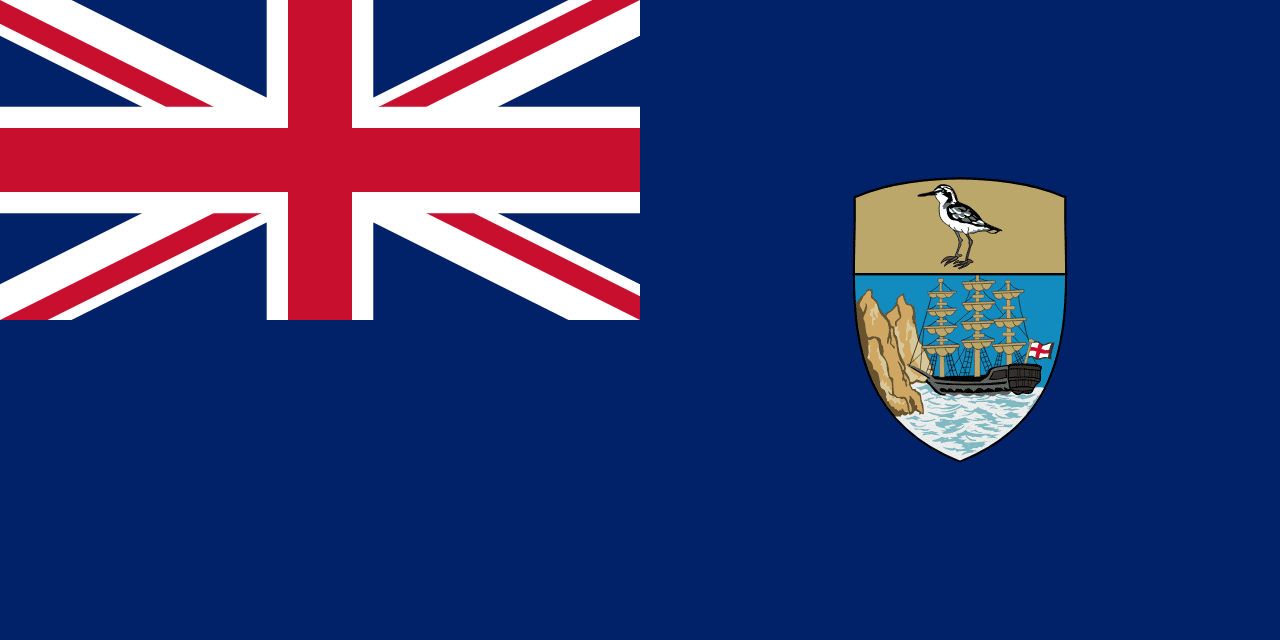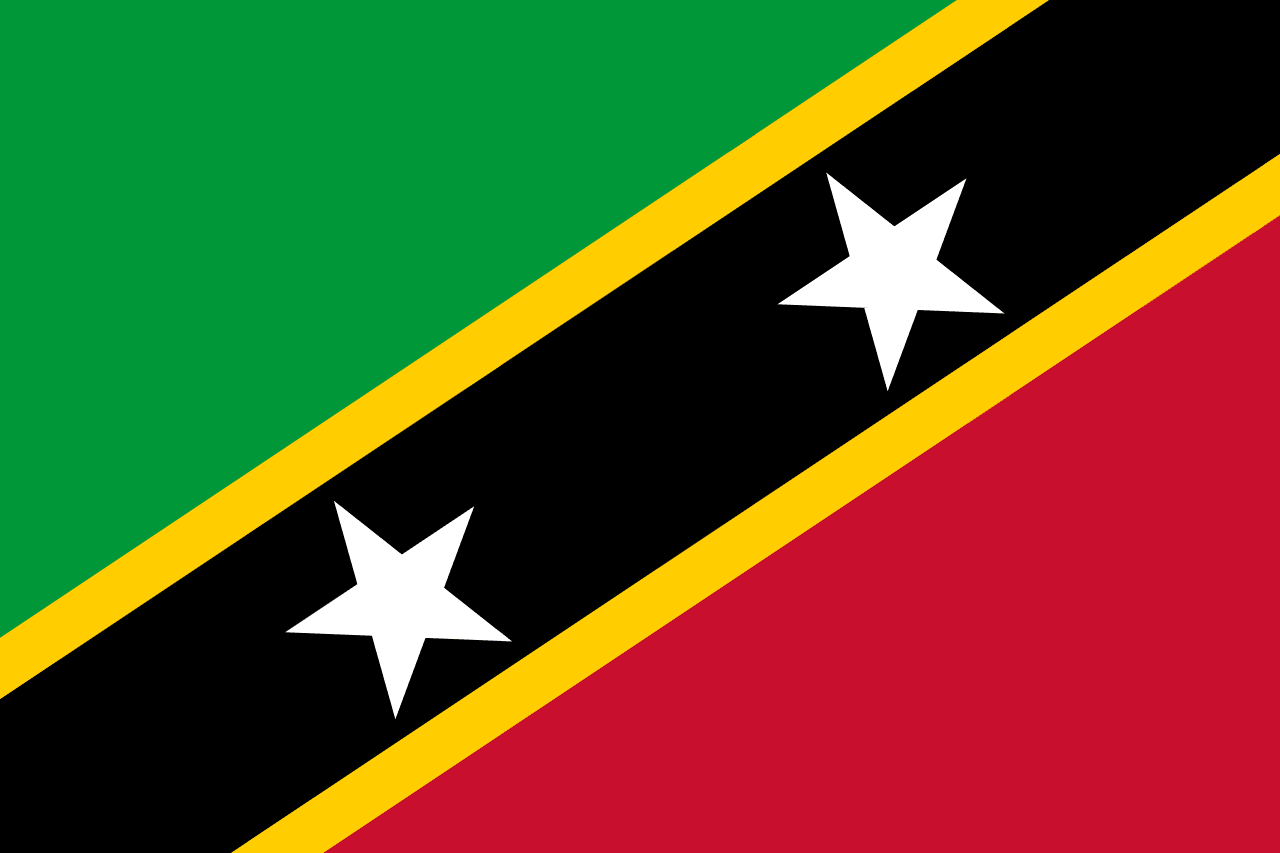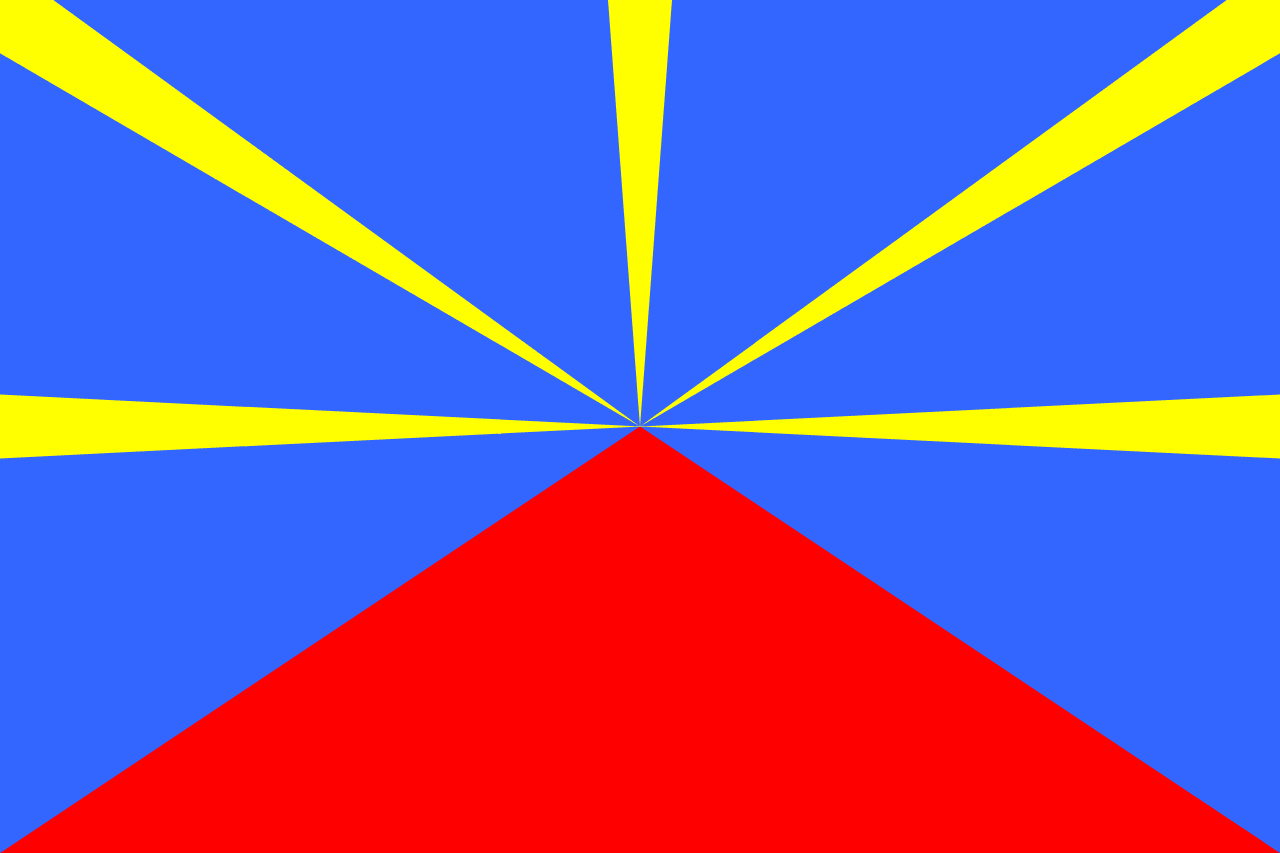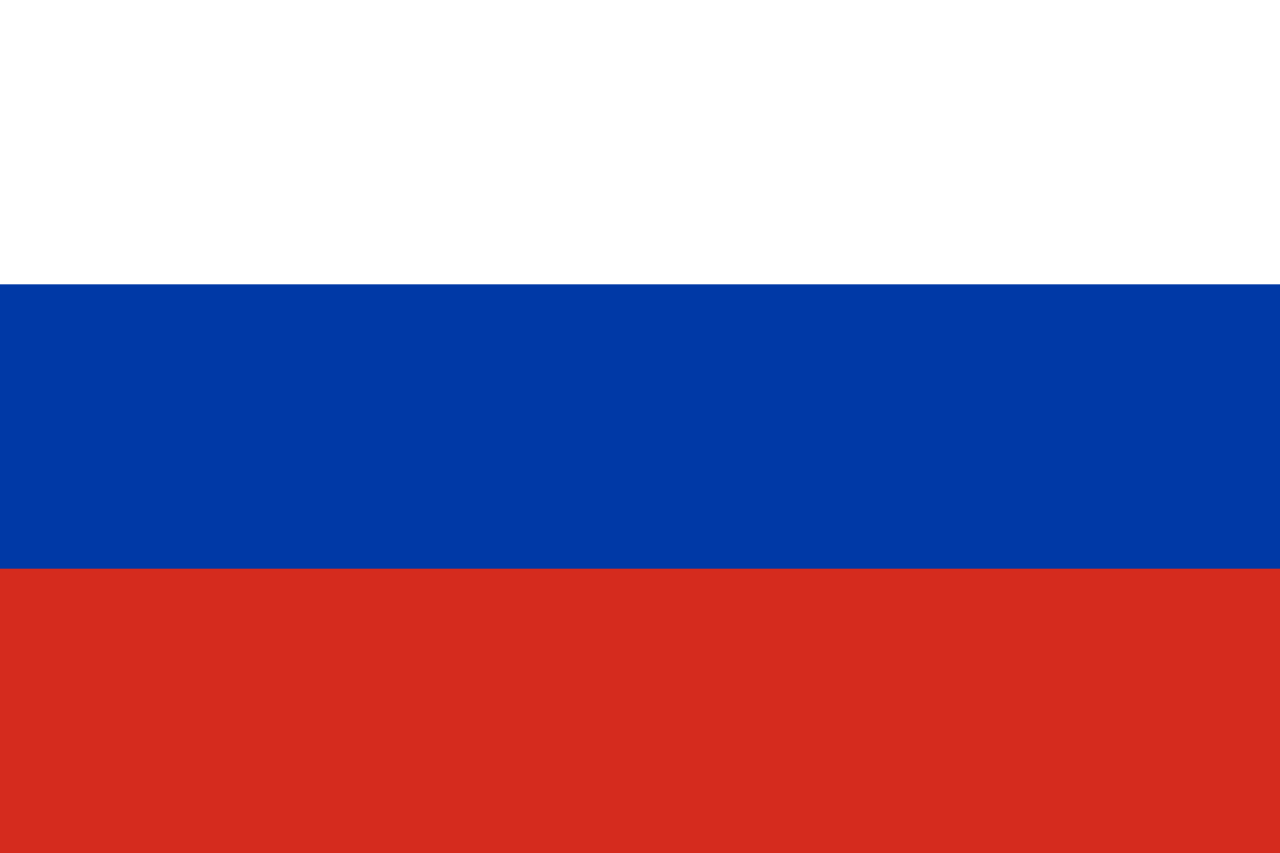The flag of Rwanda consists of three horizontal stripes: sky blue on top, yellow in the middle, and green at the bottom. In the upper right corner, a golden sun with 24 rays is depicted. This design, adopted in 2001, represents hope, peace, and the country's aspirations for a bright future.
Rwanda information
| National Flag Day | — |
| Sovereign state | Yes |
| Official name | Republic of Rwanda |
| Capital | Kigali |
| Population | 12,955,768 |
| Area | 26,338 km² |
| Currency | Rwandan franc (RWF) |
| Language | Kinyarwanda, English, French, Swahili |
| Continent | Africa |
| Region | East Africa |
| Subregion | Great Lakes |
| Borders | Burundi, Democratic Republic of the Congo, Tanzania, Uganda |
| Timezone | Central Africa Time (CAT) UTC+2 |
| Calling code | +250 |
| Top-level domain | .rw |
History of the Rwandan flag
 The current Rwandan flag was officially adopted on October 25, 2001, replacing the previous red, yellow, and green tricolor that had been in use since Rwanda's independence in 1962. The change in flag design was part of broader efforts to foster national unity and reconciliation following the devastating genocide of 1994. The new flag symbolizes the country's commitment to peace, development, and unity, moving away from symbols associated with the ethnic divisions of the past.
The current Rwandan flag was officially adopted on October 25, 2001, replacing the previous red, yellow, and green tricolor that had been in use since Rwanda's independence in 1962. The change in flag design was part of broader efforts to foster national unity and reconciliation following the devastating genocide of 1994. The new flag symbolizes the country's commitment to peace, development, and unity, moving away from symbols associated with the ethnic divisions of the past.
Symbolism and design of the Rwandan flag
Each element of the Rwandan flag carries deep symbolic meaning. The blue stripe at the top represents happiness and peace, reflecting Rwanda's aspirations for a harmonious future. It also symbolizes the sky and the numerous lakes in the country, known as the "Land of a Thousand Hills". The yellow stripe in the middle represents economic development and mineral wealth, highlighting Rwanda's focus on economic growth and prosperity. The green stripe at the bottom symbolizes hope and optimism for the future, as well as the country's natural resources and agricultural potential. The golden sun in the upper right corner has 24 rays, representing enlightenment. It symbolizes unity, transparency, and the Rwandan people's collective hope for a brighter future.
Usage and significance of the Rwandan flag
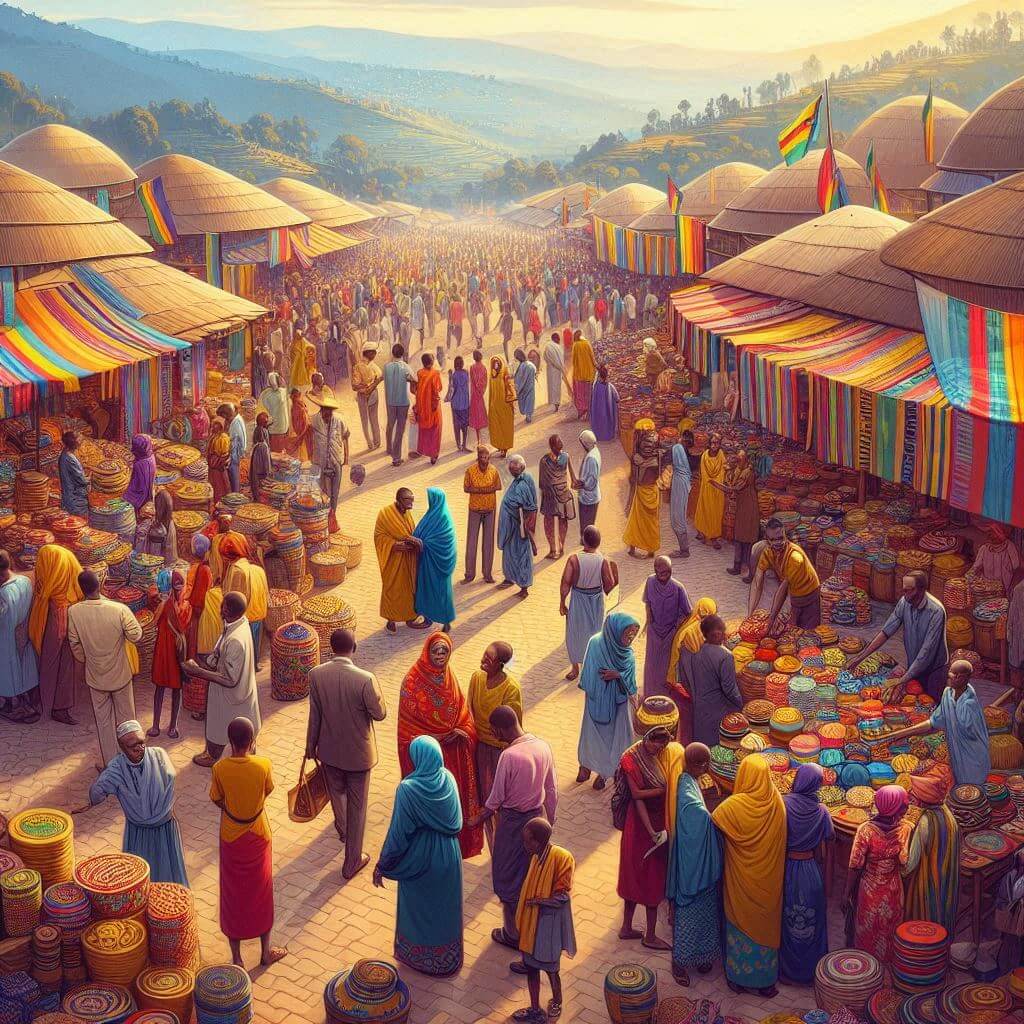 The flag of Rwanda is a powerful symbol of national identity and the country's remarkable journey of recovery and reconciliation. It is prominently displayed on government buildings, schools, and during official ceremonies. The flag plays a crucial role in fostering national pride and unity, particularly during national holidays such as Independence Day (July 1st) and Liberation Day (July 4th). In international contexts, it represents Rwanda at diplomatic events, global sporting competitions, and cultural exchanges. The flag serves as a constant reminder of Rwanda's commitment to peace, progress, and unity, embodying the resilience and hope of the Rwandan people.
The flag of Rwanda is a powerful symbol of national identity and the country's remarkable journey of recovery and reconciliation. It is prominently displayed on government buildings, schools, and during official ceremonies. The flag plays a crucial role in fostering national pride and unity, particularly during national holidays such as Independence Day (July 1st) and Liberation Day (July 4th). In international contexts, it represents Rwanda at diplomatic events, global sporting competitions, and cultural exchanges. The flag serves as a constant reminder of Rwanda's commitment to peace, progress, and unity, embodying the resilience and hope of the Rwandan people.
Interesting facts about the Rwandan flag
- The current flag design was chosen through a national competition, emphasizing public participation in creating new national symbols.
- Rwanda is one of the few countries to have dramatically changed its flag design in recent history as part of a broader strategy of national reconciliation.
- The flag's colors are often incorporated into national dress and cultural celebrations, reinforcing its significance in daily life.
- Rwanda has made remarkable progress in economic development and social reconciliation since the 1994 genocide, with the flag symbolizing this transformation.
- The country has become a leader in environmental conservation in Africa, reflected in the green stripe of the flag representing hope and natural resources.

